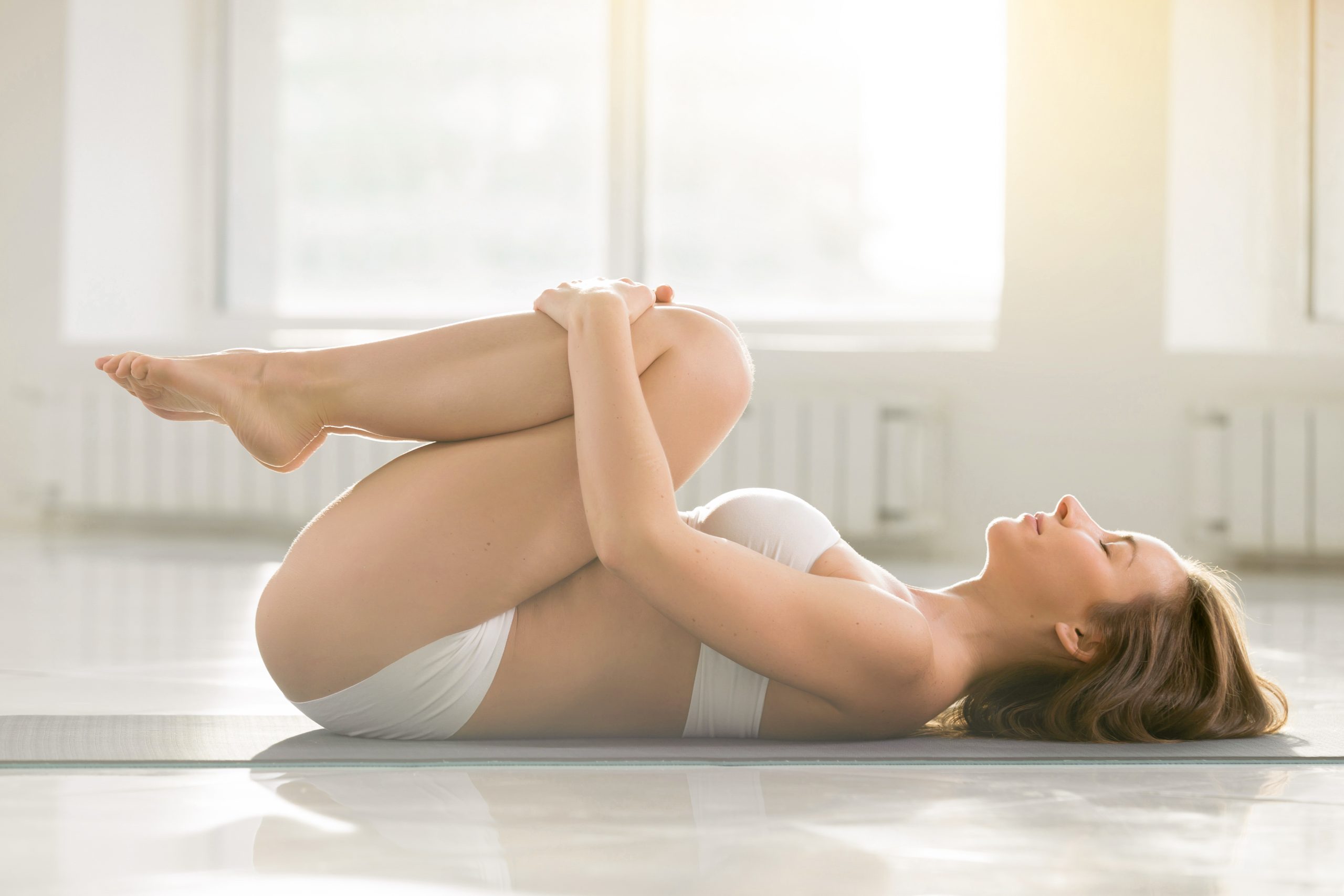Though yoga is not yet an Olympic event (thank goodness), there is a lot of striving and competition in yoga classes today. As a culture, we’re goal-oriented and externally focused, and our asana often reflects that. One way we can shift to internal awareness is to practice the Pawanmuktasana Series, simple joint movements or warm-ups that prepare the body for more complex postures and focus the mind on coordinating breath and movement.
Three groups of these simple movements, known collectively as pawanmuktasana, are associated with the Bihar School of Yoga, founded by Swami Satyananda Saraswati in 1964. In Sanskrit, pawan means wind; mukta is to liberate, free, or release; and asana is usually translated as pose. To clarify, the wind-freeing pose or head-to-knee pose that many yogis refer to as pawanmuktasana is included within the second Bihar group, the digestive/abdominal exercises. The first group, anti-rheumatic exercises, include familiar neck circles, shoulder rolls, etc. The third, shakti bandha, moves stagnant energy, particularly in the pelvic region.
Together, the three groups include more than 30 movements and variations, and each is linked to breath awareness. Swami Satyananda considered them to be the very foundation of asana, “subtle exercises” that release physical and mental energy blockages and tone the body-mind for deeper practices.
Surprisingly, only a few yoga studios in the West teach the full series. At Seven Centers Yoga Arts in Sedona, AZ, Director Ruth Hartung (Sraddhasagar) emphasizes the importance of the Pawanmuktasana Series to yoga instructors-in-training: “The mind/body/breath coordination is the secret to its effectiveness, whether used as a warm-up before asana practice or as a set of therapeutic practices to decrease ‘wind,’ a root cause of many illnesses according to both Ayurveda and traditional Chinese medicine.”
This is why she also suggests the series to aspiring yoga therapists. In passing along this piece of her Bihar lineage, Hartung gives her trainees a tool for teaching classes to special populations, such as kids or seniors, or to those confined to wheelchairs or hospital beds. She says, “[These] are simple exercises most people can do no matter what age, health condition or level of yogic experience.” The anti-rheumatic group, in particular, is similar to the ROM/PROM exercises used by nurses and physical therapists to measure and maintain patients’ flexibility.
As yogis, we can use the Pawanmuktasana Series to understand our baseline and when it changes due to injury or progress. But including pawanmuktasana at the beginning of an asana session has benefits beyond the physical: We feel focused and grounded—able to experience the subtleties of practice. Ironically, the more athletic our yogasana practice becomes, the more challenging it is to practice the Pawanmuktasana Series. We are so accustomed to efforting and multi-tasking that the mind rebels at such a simple task. Pawanmuktasana teaches us to humble the ego—one of yoga’s most profound lessons.
In what other ways can the Pawanmuktasana Series benefit yoga teachers and students?


















Leave a Reply